Easy Homemade Ashta Cream
The easiest and quickest way to make a shortcut, Arabic-style clotted cream, perfect for topping or filling into your favorite Middle Eastern desserts.

Ashta is the whipped cream of the Middle East.
It is literally the ‘creme de le creme’ of pastries in the region.
If it doesn’t make its way into the dessert, then we always find an excuse to use it as a topping.

What is Ashta Cream?
Ashta (or Eshta, as we pronounce it in Egypt) has even made its way into Egyptian slang. We use it to say all is great when agreeing with something, as in “Eshta, that sounds great!” It is also used to describe something that is clear and pure, and has no blemishes or faults…as is this recipe ? (JK…but not really!)
Real deal ashta is a luxuriously rich and creamy, thick clotted cream traditionally made by skimming off the thin skin that forms on the surface of boiling milk, over and over again. It’s a long process that requires patience, but the result is surely worth it.
I have never made the aforementioned type of ashta, because I never felt the need to get myself into such a labor-some process, when it’s all over the place in Egypt.
Store-bought and convenient was always my way to go when it came to ashta, until I tried this brilliant shortcut!

I’ve been liberally using ashta to top and stuff many of my Middle Eastern desserts, like these Halawet El Jibn, taking for granted that it’s easily accessible.
But boy have I been wrong! This has caused an influx of substitute inquiries, as well as homemade recipe requests, like I wouldn’t have imagined.
I still think mascarpone cheese and British-style clotted cream are as close as it gets, but I needed a homemade solution that doesn’t require hard to find or expensive ingredients.
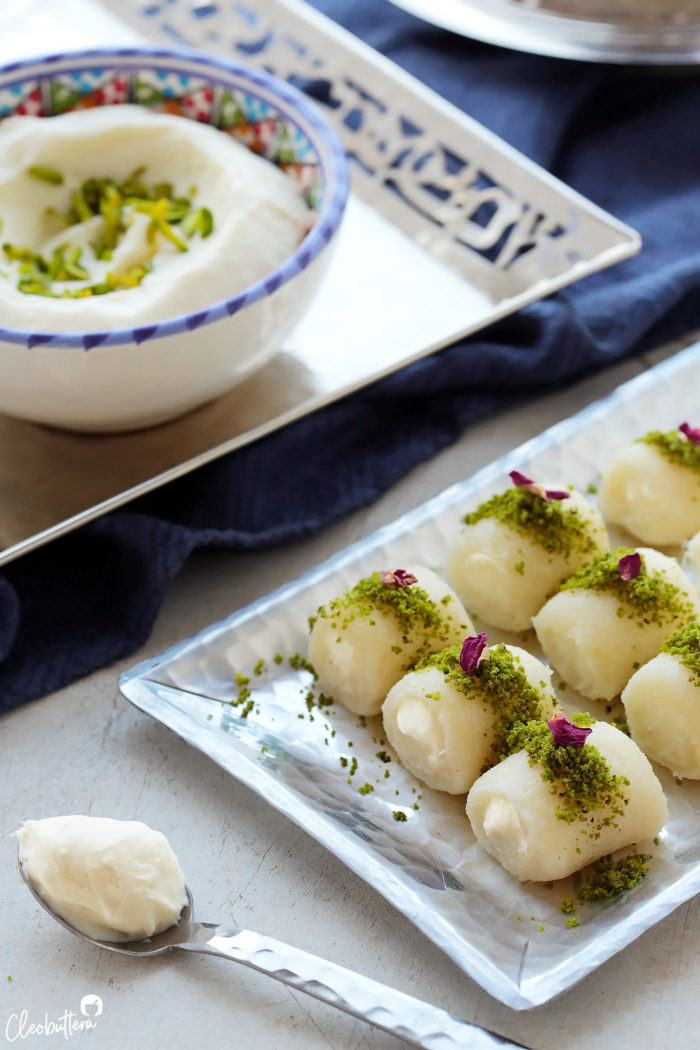
Different ways to make ashta at home
My research boiled down to 3 popular methods:
One of them involves a milk pudding that uses crustless white bread as the thickener. A lot of people swear by this method, but it’s honestly not my personal favorite, as I find it imparts a clear bread-y flavor and is not as rich as ashta should be.
The other one is made by making a ricotta cheese-like cream base, by adding vinegar to hot milk. This causes the milk to curdle, and separate the milk curds from the whey. This leaves you with a curd base that is then combined with either milk pudding or canned or fresh ashta to make an even better ashta. I have nothing but admiration to this method, except that it’s not as foolproof as the one you’re about the see.
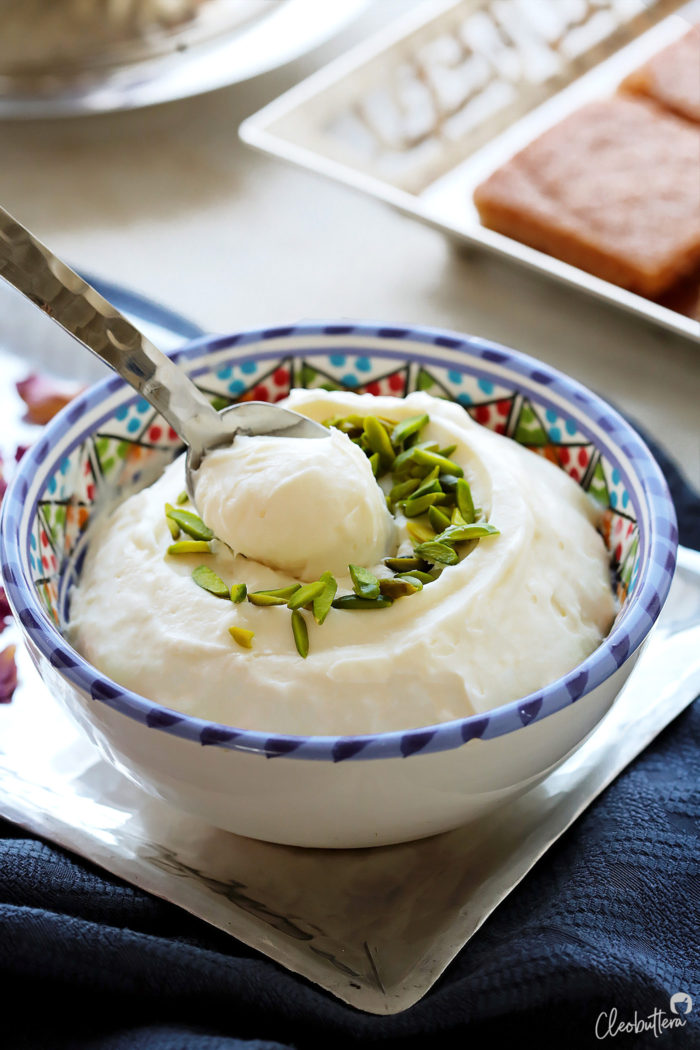
What is the easiest, homemade Ashta like?
In the Arab pastry world, the following ashta-making method is known as ‘Eshta Kazaba,’ meaning ‘Lying Ashta.’ Makes me feel like a cheater lol, but it’s kind of true.
Because while not made the authentic way, it’s so similar in taste and texture to real deal ashta, that it will deceive you into thinking that it is really is one.
It is laughably easy to make, requires basic, everyday ingredients, and the result is creamy perfection. Rich, ultra thick, and smooth, just the way fresh ashta is meant to be.
It relies on the milk pudding method, known as mehalabeya, but the consistency is very different for it.
What do we need to make it?
To make this “make believe” ashta, you’ll need things you probably already have on hand:
Whipping cream (aka heavy cream) for richness, whole milk for smoothness, flour and cornstarch as our thickener and a tiny bit of sugar for a hint of sweetness. You can flavor your ashta with rose and orange blossom water or vanilla if you like, but in most cases I leave it plain just like real ashta.

How to make easy, homemade ashta?
Ready for this?
EVERTHING goes into a saucepan and whisked off heat until smooth, then brought to a boil over medium-high heat until thickened. Done!
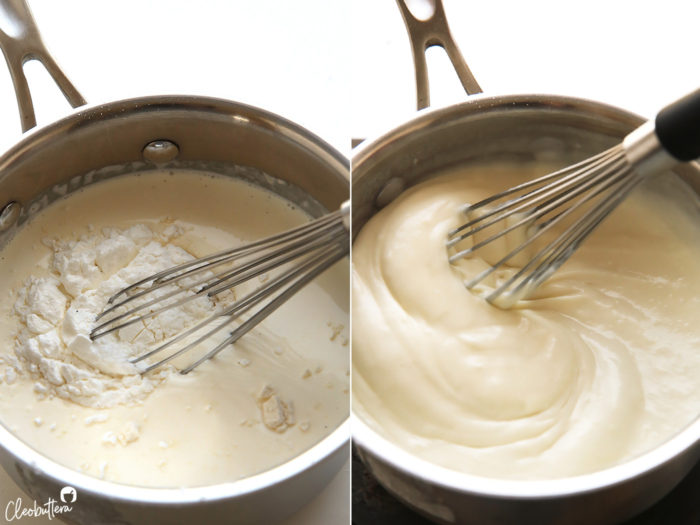
I think this was just the shortest recipe I’ve ever shared on the blog! I feel something’s missing.
Oh yeah…pour it into a bowl. Press plastic wrap directly on the surface to prevent a skin from forming and refrigerate until cold and set, at least 1 hours or up to 3 days.

For realz…that is really it!
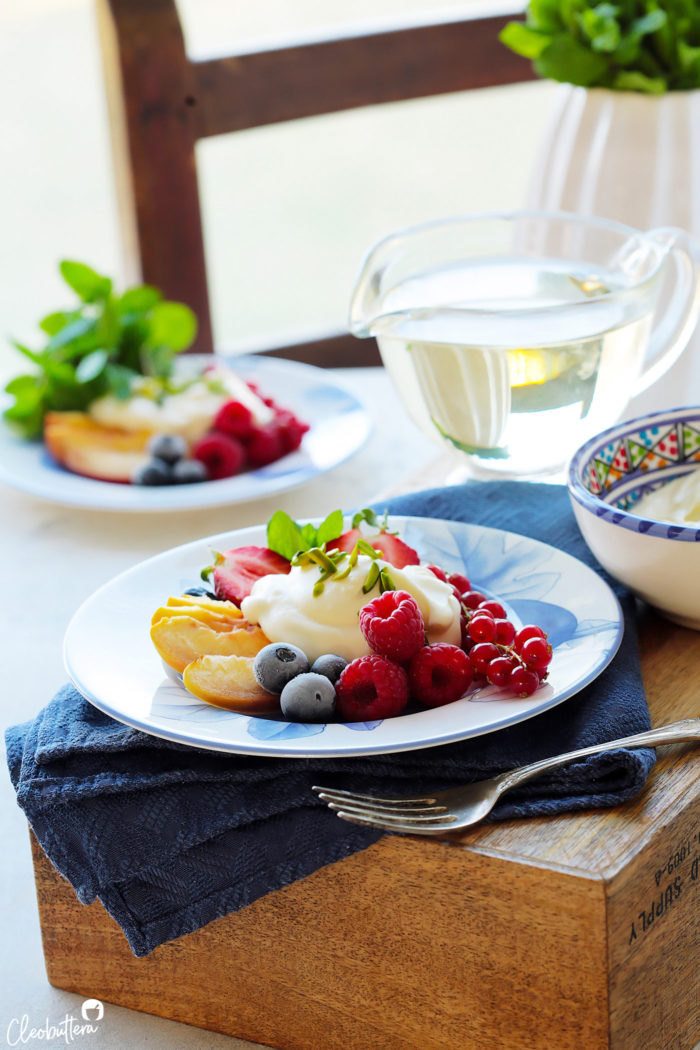
A no-frills, easy peasy recipe for hacking ashta at home! Perfect for topping over your favorite desserts and fruits or using as a stuffing for anything that calls for fresh ashta.
People might fall for this “Lying Ashta,” but they’ll not believe that you made it at home.
Stay tuned for an amazing recipe coming your way that makes use of this creamy ashta in the most delicious way possible!
Easy Homemade Ashta (Middle Eastern Clotted Cream)
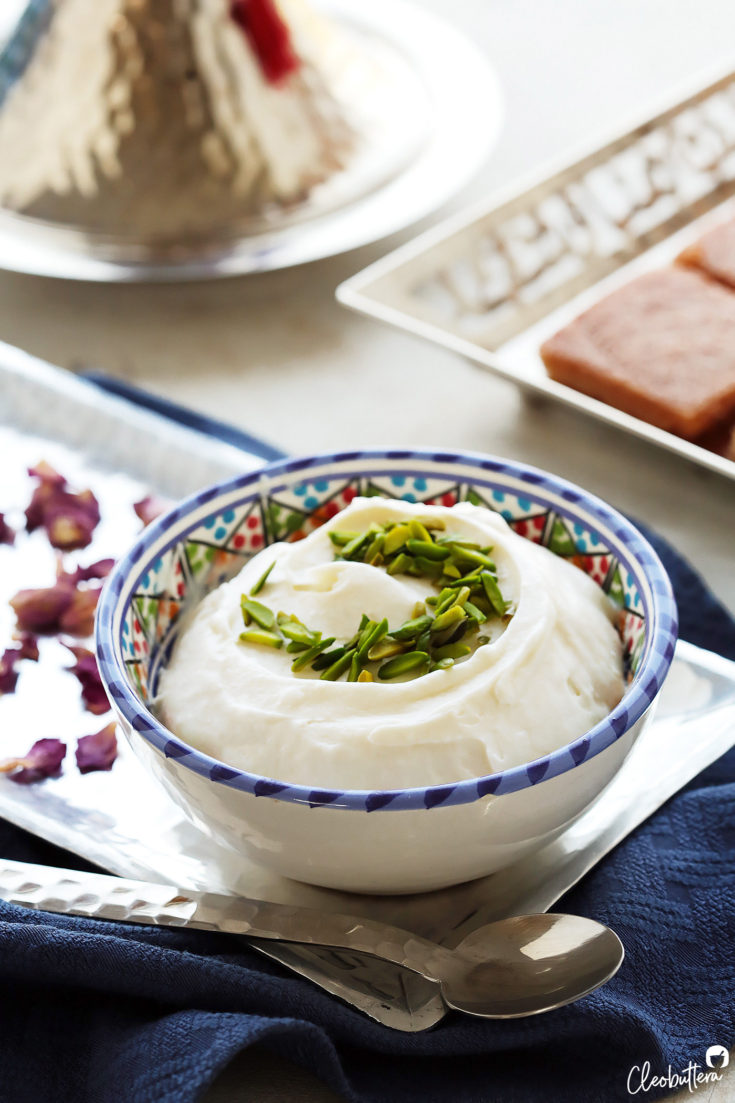
The easiest and quickest way to make a shortcut, Arabic-style clotted cream, perfect for topping or filling into your favorite Middle Eastern desserts.
Ingredients
- 1 cup (237ml) whipping cream
- 1/2 cup (118ml) whole milk
- 2 tablespoons (15g) all purpose flour
- 2 tablespoons (14g) cornstarch
- 1 teaspoon granulated sugar
- Optional flavoring of your choice such rose or orange blossom water, vanilla or ground mastic
Instructions
- In a medium saucepan, off the heat, whisk together the whipping cream, milk, flour, cornstarch and sugar, until well combined and the flour and cornstarch have dissolved completely without any visible lumps.
- Set the saucepan over medium-high heat and cook, whisking constantly until the mixture forms large bubbles over the surface and reaches a full boil. Continue to cook for about 30 more seconds, until the mixture becomes very thicken. Add in any flavoring of your choice or leave plain.
- Pour into a bowl and press plastic wrap directly on the surface to prevent a skin from forming and refrigerate until cold and set, at least 1 hours or up to 3 days.
- Stir with a spoon to loosen up before using. If you prefer a looser consistency, give it a quick whiz in the blender until smooth.
- Asha will keep in the fridge, well-covered for up to 3 days. It does not freeze well.
Recipe Notes
- This recipe is recommended as a topping or filling for Middle Eastern desserts, but has not been tested as one of many components that make up a pastry like this basbousa or this ice cream. It also has not been tested as an Om Ali topping that can be broiled, although I don't see why it wouldn't work.
- Asha will keep in the fridge, well-covered for up to 3 days. It does not freeze well.
Recipe adapted from Manal ElAlem
Measurements Note: All recipes of this site have been developed using weight measurements. Although US volume measurements have been included for your convenience, it is highly encouraged that you weigh your ingredients using a kitchen scale to get the best possible results. Due to the sensitive nature of baking, kitchen scales are proven to yield more accurate and consistent results than measuring cups. Enjoy!
This post may contain affiliate links.
All images and content are owned by Cleobuttera® and are copyright protected. Please do not use my images without prior permission. If you would like to republish a recipe, please rewrite it in your own words and link back to the recipe page on my site. Original recipes and creations of this site are intended for personal and home use. Commercial replication or media consumption are only allowed with a written consent and agreement with Cleobuttera owners. Otherwise it is considered a violation of intellectual property. Thank you for respecting and appreciating the amount of time and effort that goes into creating free, unique recipes that make people happy.